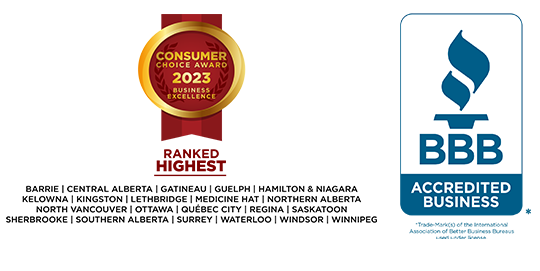Changes To The Execution Act Will Benefit Ontario Residents
2016-01-05 minute read
Exempt Assets and Their Limits
The Execution Act is the legislation responsible for outlining those assets that cannot be seized by a creditor or a Trustee in Bankruptcy to help pay down debts. While there is a procedure in place to exercise your right to these exemptions, in general the assets that are listed here are protected from seizure up to their stated value.
These exemptions also apply when filing an assignment in bankruptcy. When you file for bankruptcy your assets vest with the Trustee so that they may recover as much money as possible for your creditors. The assets listed in the Execution Act are protected from your Trustee in Bankruptcy, which means you would be able to keep them if you filed for bankruptcy.
Effective December 1st, 2015 the list of exempt assets has changed for Ontario residents. Here is the summary of the new exemption limits:
- Necessary Clothing = No limit
- Household furniture and appliances = $13,150
- Tools for Farming = $29,100
- Motor Vehicle = $6,600
- Principle Residence = $10,000
- Tools of Trade = $11,300
What’s New for Ontario Residents?
The most significant change to this legislation is the inclusion of a $10,000 exempt limit for a person’s principle residence. While other provinces have enjoyed an exemption for their principal residence, residents of Ontario did not have this option until now. Essentially the exemption is based on the equity available in a person’s home. Equity can be calculated a few different ways but in very general terms, it’s the amount of money available when you sell the property after paying out the existing mortgage(s) and / or closing costs.
This new exemption limit is going to have a big impact for those individuals filing a Consumer Proposal or an assignment in bankruptcy. Previously the equity in a person’s home was not considered an exempt asset. As a result if a person had equity in their home, the Trustee would need to make sure that the value of that equity was paid in to the bankruptcy estate one way or another. Often times payment arrangements were made, but occasionally, depending on the value of the equity it would be necessary to sell the home. This new exemption limit means more individuals would be able to file an assignment in bankruptcy without having to worry about house equity being an issue.
The amount of house equity can also be a factor when filing a Consumer Proposal. The goal of a Consumer Proposal is to offer the creditors a higher payment then they would receive in a bankruptcy proceeding. This means that before this exemption, the amount of house equity that would be payable in a bankruptcy could be a factor in determining the required payment in a Consumer Proposal. House equity however, is only one factor considered when determining if a Consumer Proposal is a better option. The exemption limit for a person’s principal residence is more of a factor in bankruptcy administration.
Other changes to consider
The previous exemption listed a basic exemption for personal effects and household goods. These more broad categories allowed a more general list of goods that could be covered under exemption limits. For example, jewellery or electronics would fall under the category of personal effects.
The new exemption limit lists household goods, furniture and appliances with an increased exemption limit of $13,150. Most Ontario residents will find that the sale value for these types of goods would not exceed their exemption limit. These limits are for the value of your goods as they exist now, not the replacement value.
The exemption limit for “necessary clothing” does present an issue as there is no criteria outlined to determine what is meant by necessary clothing. As these new exemption limits are put into practice by Trustees, there will be a standard way of applying them for a basic bankruptcy estate. Most Trustees would agree that taking jewellery such as a wedding ring or family heirloom would be overly punitive in nature while also netting little value for the creditors. Likewise the sale value of a used tablet or laptop would not be worth the time and effort needed to sell the property.
Moving Forward
When dealing with debt issues it is important to understand your rights as a consumer. This includes understanding which of your assets is subject to seizure by your creditors or a Bankruptcy Trustee. These new exemption limits reflect the increasing cost of living and further allow for consumers to move out from the cycle of debt without losing everything.
If you are hesitating to consult with a trustee in bankruptcy because you are afraid you will lose everything rest assured that there is legislation like Ontario’s Execution Act that will protect your rights.

